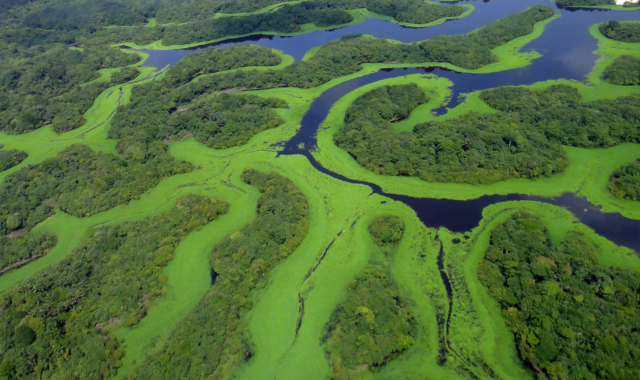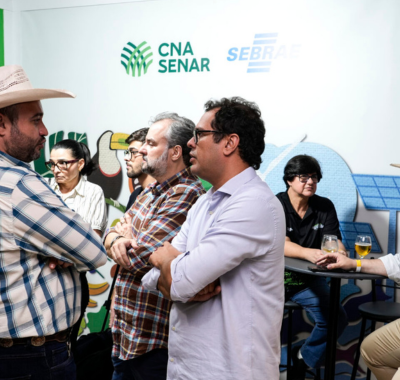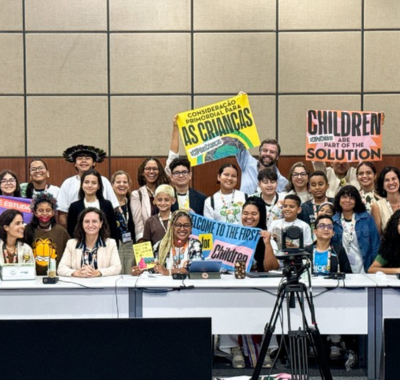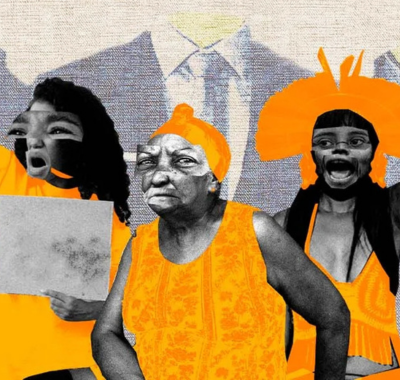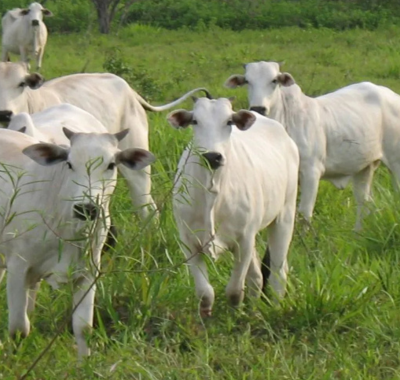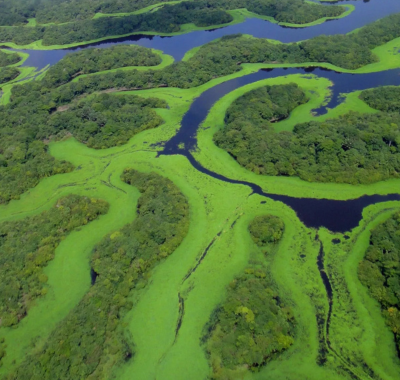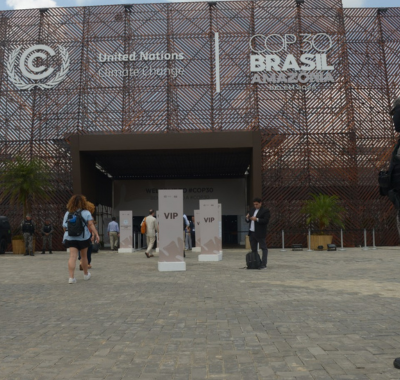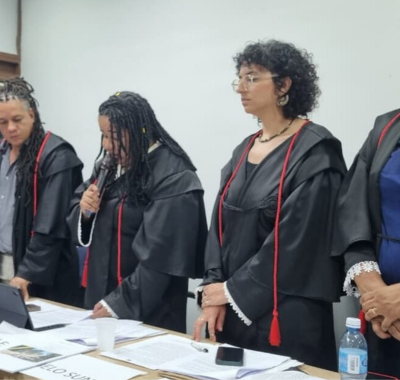Given the climate emergency, the federal government’s plan should include forest degradation, align targets with states, and improve rural credit, say researchers in Belém
By Fábio Bispo, Ana Magalhães
Translated by Diego Lopes/Verso Tradutores
Despite the federal government’s plan for zero illegal deforestation by 2030 having an interministerial team, being comprehensive, and having managed to reduce the rate of forest destruction in the last year, scientists interviewed by Infoamazonia at COP30 see areas for improvement. They believe that, given the emergency scenario of global warming, Brazil should be bolder and expand its goals.
Among the problems highlighted by the researchers are the plan to eliminate only illegal deforestation (without considering legal deforestation), the failure to consider increasing forest degradation, the lack of synchronicity between the goals of the federal government and those of the states, and the fact that the Brazilian government’s plan does not foresee improvements and controls in bank financing for rural producers.
Announced by President Lula during COP27 in Egypt, and subsequently published in January 2023 as part of the 5th phase of the PPCDAm (Action Plan for the Prevention and Control of Deforestation in the Legal Amazon), the government’s goal is to achieve zero illegal deforestation by 2030 and compensate for legal deforestation through the regeneration of degraded areas.
In 2024, during COP29 in Baku, Azerbaijan, the goal was included in Brazil’s Nationally Determined Contributions (NDCs) as part of efforts to comply with the Paris Agreement, which seeks to stabilize global warming at 1.5°C. However, there is still no official figure, in hectares or square kilometers, for what would constitute legally acceptable deforestation within the plan. This is already a problem in itself, as stated by researcher Brenda Brito from the Institute of Man and Environment of the Amazon (Imazon).
However, some see bigger problems. This is the case of one of the country’s leading climate experts, researcher and professor Carlos Nobre—the first Brazilian to warn about the Amazon’s desertification point in the 1990s (now called the point of no return, a critical limit in a system that marks the transition to an irreversible state, in which the forest can no longer regenerate). Nobre argues that the government’s goal should be zero total deforestation by 2030.
“We need a bill that prohibits any deforestation in any Brazilian biome, now and for many decades, otherwise we will pass the point of no return for these biomes [Amazon, Pantanal, Cerrado and Caatinga] .” According to Nobre, there is a chance that this point of no return for the Amazon will be reached between 2050 and 2070. If this happens, there would be a cascading effect on the other biomes—impacting the plantations in the Midwest, Southeast and South of the country.
“If we pass this point of no return, we will also greatly reduce the so-called ‘flying rivers,’ which is the transport of moisture to the Southeast. It will be a massive degradation of the Atlantic Forest, and we will lose more than 50% of the Cerrado.” Therefore, he adds, there is a need for a more ambitious goal than the one already presented by the government. Nobre has been warning about this for years, and at COP30, he has tried to be more emphatic: “If we reach this point, Brazil will no longer be a major food producer. It is yet another enormous risk for the entire Brazilian economy and for Brazilian society; Brazil will become an even poorer country.”
Carlos Nobre’s arguments are based on the current configuration of legal deforestation in Brazil. In the Amazon, it can be up to 20% of a property’s area. In other biomes, however, this percentage is higher, reaching 50% in the Pantanal, for example. “This COP has to be very important in combating this emergency; this means not letting the temperature exceed 1.5ºC by much.”
The problem of not including forest degradation
Another serious issue is that forest degradation is not included in the government’s targets—nor in the official deforestation figures.
A researcher from the National Institute for Space Research (INPE) explained that the deforestation measurement made by the Prodes program, which generates annual rates and supports public policies, is conservative. Deforestation is only recorded when the affected area no longer has trees, no longer looks like a forest, when it reaches the limit, showing less than 30% vegetation cover. Degradation, on the other hand, is a continuous process—happening little by little, either through fires or through irregular logging, for example.
The issue is that degradation can turn into deforestation. According to the INPE source, the Amazon was very resilient because it had a lot of moisture. But in recent years, with severe droughts and climate warming, fire is entering the forest. The same area, with three successive fires, for example, can lose more than 70% of its vegetation cover, and only then does it enter into the deforestation count mapped by the official program.
While recent Prodes figures show an 11% decrease in official deforestation between August 2024 and July 2025 compared to the previous period, forest degradation is increasing. Last year, the Amazon recorded a degraded area of over 2,500,000 hectares, a 44% increase compared to 2023 and 163% compared to 2022, according to an article published in the journal Global Change Biology by scientists from INPE in partnership with the University of São Paulo and institutions from the United Kingdom and the United States. One of the main causes of degradation is fire.
While the government’s annual deforestation rate focuses on clear-cutting (when there is total elimination of trees), other tools and platforms make less conservative measurements—considering, in addition to deforestation, the destruction caused by wildfires, for example. This is the case with data from the University of Maryland, available on the Global Forest Watch platform. The concept used there is “loss of primary forest.” That is, everything that generates forest loss is factored into the calculation. And the numbers are alarming.
Data from the University of Maryland analyzed by Amazon Conservation shows that Brazil lost 2,831,503 hectares of primary forest last year, with fire affecting more than half of that area, directly impacting 1.9 million hectares. This impact was the largest ever recorded since 2002, surpassing the previous record of 2016 (1.6 million hectares), according to report 229 of the Andes Amazonia Monitoring Program (MAAP) .
The main pressure points coincide with agricultural frontiers of soy and livestock farming, especially along the BR-163 highway (in Pará and Mato Grosso), and on the BR-230 (Trans-Amazonian Highway), BR-319, and BR-364 highways, which cross areas of agricultural expansion in Rondônia, southern Amazonas, and Acre. The fires also affected 751,000 hectares in Indigenous lands and more than 372,000 hectares in conservation units.
The loss of native forest also increased throughout the Pan-Amazon region, which includes nine countries. Adding together deforestation and fires, the entire Amazon lost 4.5 million hectares of primary forests in 2024 alone. Brazil and Bolivia accounted for 95% of the areas burned that year.
Since 2002, that is, in more than two decades, MAAP estimates that 33.7 million hectares of primary forest have been lost, of which 10.6 million were impacted by fire throughout the Amazon. This means that fires already account for about a quarter of the accumulated loss of native forest.
The report warns that, as a driver of destruction, the degradation caused by fires is becoming as significant as deforestation in the Amazon.
“2024 was particularly intense in terms of fires and slash-and-burn events, and I think there might be a bit of blindness on the part of the government on this point, in clinging too tightly to a narrower definition of what constitutes deforestation ,” analyzes Blaise Bodin , Director of Strategy and Policy at Amazon Conservation.
He points out that other initiatives already integrate and consider degradation and wildfires, such as an agreement reached between Pará and a coalition of carbon credit buyers for reducing deforestation. “In this methodology, for example, which is used by the voluntary carbon market, fires will affect the results because it takes degradation into account.”
The government launched — and the National Congress approved in July 2024 — the National Integrated Fire Management Policy, as part of the zero illegal deforestation plan, and it has already yielded results. However, ignoring the degradation that leads to deforestation remains a problem.
InfoAmazonia reached out to the Ministry of Environment and Climate Change and the Civil House of the federal government for comment on the criticism, but received no response by the time this report was published.
Another important point is that wildfires, in addition to destroying vegetation, are significant emitters of carbon dioxide—which could jeopardize plans to reduce these emissions. Global warming and rising temperatures leave the forest drier and more flammable, adding fuel to the fire and feeding a vicious cycle.
“A key point to emphasize is the apparent significance of El Niño fire years and the importance of planning for future years. And the likelihood that climate change could make ‘normal’ years more like El Niño,” says Matt Finer, senior researcher and director of MAAP.
The importance of aligning goals with the states of the Legal Amazon
Imazon researchers Brenta Brito and Paulo Barreto studied the targets released by the 9 states of the Legal Amazon, in addition to the federal government’s plan. Their conclusion shows that some regional targets are inconsistent with the national plan. “Pará launched a plan in 2020 predicting that legal deforestation in the state will reach up to 1,538 km² by 2030. The problem is that the Brazilian target, according to our calculations, is half of that for the entire Amazon. In other words, there is a lack of alignment,” says Brito, highlighting the importance of COP being a space for this dialogue with the states. “It would be better if everyone was on the same page.”
The researcher from the Federal University of Pará points out that she calculated the amount of legal deforestation in the Amazon in 2030 based on sectoral climate plans released in July of this year—because, officially, the Brazilian government has not yet released this measurement, which is also a problem. “ According to our calculations, legal deforestation in the Amazon would have to decrease to 700 km² by 2030. But where will that happen? Which state will have the greatest share in this? I think these discussions never took place. ”
The study published by Imazon scientists highlights that only four states have deforestation targets, and only two of them are measurable. “In some cases, governments will likely only adopt targets for their term. They are looking at 2026, 2027. It’s important to have instruments in place, such as state decrees, which look further ahead so that we can align these objectives,” she concludes.
The problem of who finances agribusiness
Agricultural activities, such as soybean plantations and cattle ranching, are among the main drivers of deforestation in the Amazon. The problem is that foreign, public, and national banks have been granting rural credit to farmers with a “tainted environmental record” and in violation of the Rural Credit Manual, which dictates the rules for this type of financing, as revealed by a Greenpeace survey published in 2024.
According to the report “Funding Extinction,” 10,074 properties were identified as being partially or totally located within Conservation Units, with 41 of them in areas of full protection (where there should be no economic activity), 24 properties partially or totally overlapping seven Indigenous lands, and 21,692 properties that fall within undesignated public forests (lands under federal control).
Furthermore, 798 properties were found to be financed on land embargoed by IBAMA (a punitive measure against illegal deforestation that prevents any activity from taking place in the area so that the forest can regenerate). In short: Brazilian taxpayer money may be going to illegal deforesters or farmers with areas overlapping Indigenous lands or conservation units for cattle ranching or soybean planting—activities that generate deforestation and exacerbate the climate emergency.
The Brazilian government implemented slightly stricter regulations in 2024. However, experts warn that there are still areas for improvement.
“The Central Bank has reinforced some regulations, including in recent years, for example by prohibiting credit for properties that overlap with undesignated public forests. We have made progress, but I think we can always go further,” says Brito. She points out that there are other forms of financing for agribusiness that are not covered by the regulations, such as Agribusiness Credit Notes (LCAs) and Agribusiness Receivables Certificates (CRAs).
Investigations have shown little control and transparency in these financing methods, and that resources linked to LCAs and CRAs are going to socio-environmental violators. Furthermore, there is a prohibition on granting rural credit to farms overlapping only officially recognized Indigenous Lands — those demarcated but not yet formalized are exempt from the rule, a point also criticized by experts and which encourages deforestation in the territories of native Peoples.
—
This report was produced by InfoAmazonia as part of the Collaborative Socio-environmental Coverage of COP 30. Read the original at https://infoamazonia.org/2025/11/17/na-cop30-pesquisadores-pedem-amplicao-da-meta-brasileira-de-desmatamento-zero-ate-2030/

